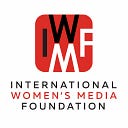Hostile Environments Can Appear Anywhere
How the IWMF is using HEFATs to equip and protect women journalists
In a time of unprecedented division, violence and charges of fake news, women venture into uncertain territory with the intent to report. Equipped with nothing more than a camera and a laptop, many journalists are faced with life-threatening situations. In 2014, the International Women’s Media Foundation set out to change this state of affairs. With more than 600 journalists completing its Hostile Environment and First Aid Training (HEFAT) courses to-date, the IWMF — in collaboration with RPS Partnership — has prepared hundreds of women for compromising scenarios when reporting.
A HEFAT is a four-day training that offers real-life dramatizations and classroom-style learning sessions. Participants leave better prepared to defend themselves and navigate difficult situations — at home and on-assignment. Many newsrooms don’t offer HEFATs for reporters, causing journalists and freelancers to pay up to $5,000 — out-of-pocket — for a single HEFAT course.
Since 2014 the IWMF has conducted 44 HEFATs with a renewed focus in 2019 on the United States. Put in perspective, this equates to a roughly $3 million investment in women journalists — for free.
In such a divided world, journalists must be equipped with physical and mental self-preservation skills, especially when reporting from areas with a lack of equal rights for women. According to Hoffman, “The IWMF’s HEFATs — tailored to female journalists — offer a more nuanced perspective because women experience harassment online and in the newsroom, as well as in the field, and these discussions go deeper with a group of self-identifying females.”
For the first time since its creation, Reporter’s Without Borders 2019 World Press Freedom Index dropped the United States from a “fairly good” place for media workers to the “problematic” level. Given the increased level of threats and violence against journalists in the U.S., the IWMF is introducing HEFATs for domestic journalists. “There are a lot of situations in the U.S. that are probably just as dangerous or scary as in other countries,” said Hoffman. “Our journalists need to feel equipped for what may come, especially given today’s newly contentious environment for press across the country.”
This year the IWMF is conducting two HEFATs domestically — one in Slidell, Louisiana, and the other in Phoenix, Arizona, in the fall. Next year, four more HEFATs will be conducted nationwide prior to the 2020 elections to ensure the safety of political reporters.
There can be no full story without equal representation. When one perspective is lost, the story is not complete. In order for journalism to continue with high standards of ethics, sourcing and veracity, women in news media need to feel protected and empowered to report the truth. HEFATs provide that safe space for women to learn how to protect themselves, and their reporting, when putting their lives on the line.
